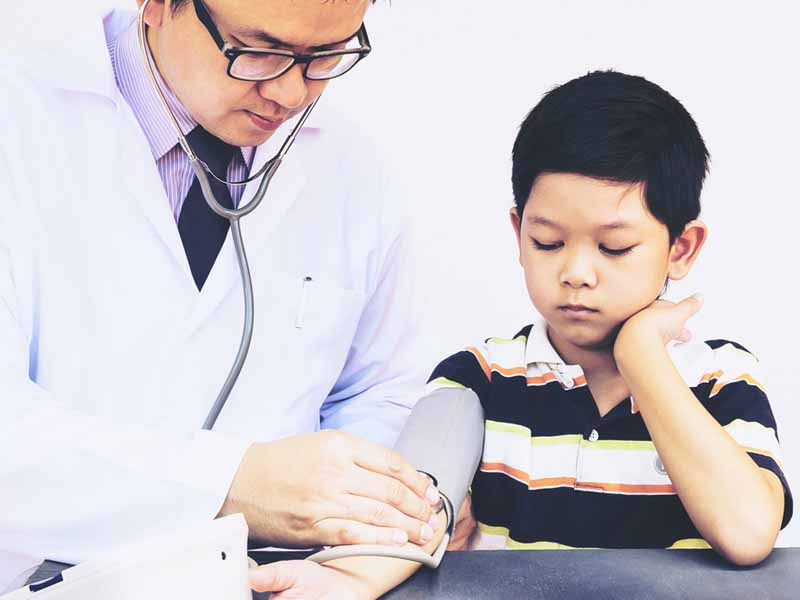AAP Hypertension Guideline Garners AAFP Affirmation of Value
April 04, 2018, 11:58 am Chris Crawford – The AAFP recently gave its affirmation of value designation to the American Academy of Pediatrics' (AAP's) "Clinical Practice Guideline for Screening and Management of High Blood Pressure in Children and Adolescents," which was published in the September 2017 issue of Pediatrics.

The AAFP gives clinical practice guidelines an affirmation of value when they provide valuable guidance but do not meet Academy criteria for full endorsement.
Jennifer Frost, M.D., medical director for the AAFP's Health of the Public and Science Division, told AAFP News that one of the main concerns about the AAP clinical practice guideline was its lack of transparency about the methodology used.
"There are several important standards of guideline development, and it's unclear whether the guideline panel followed some of these standards," she said. "Also, there is limited discussion about the potential harms of treating children long-term with blood pressure medication."
Additionally, management of conflicts of interest was not well described in the guideline, she noted.
Guideline Background
To develop its hypertension (HTN) guidelines, the AAP convened a special subcommittee that reviewed about 15,000 articles published between January 2004 and July 2016.
Story Highlights
The intent was to update the AAP's most recent guidance on the topic: its endorsement of the National Heart, Lung and Blood Institute's 2004 Fourth Report on the Diagnosis, Evaluation and Treatment of High Blood Pressure in Children and Adolescents.
The new guidelines include 30 key action statements and 27 additional recommendations. Among other important features are updated blood pressure (BP) tables that are based solely on normal-weight children. Previously, these types of tables included BP measurements for children and adolescents with overweight or obesity, which likely increased BP levels overall and introduced bias into these normative BP tables.
"As a result, the new blood pressure values are lower than those used in prior guidelines and allow for a more precise classification of blood pressure according to body size," the AAP said in a news release.
"Prevention and early detection are key," said Joseph Flynn, M.D., M.S., who co-chaired the guideline development subcommittee, in the news release. "High blood pressure levels tend to carry into adulthood, raising the risks for cardiovascular disease and other problems. By catching the condition early, we are able to work with the family to manage it, whether that's through lifestyle changes, medication or a combination of treatments."
Key Recommendations
The AAFP highlighted several key recommendations from the AAP guideline:
- Children and adolescents ages 3 and older should have their BP measured annually. In addition, BP checks should be performed at every health care encounter for children and adolescents with obesity, those who take medications that raise BP, and those who have renal disease, diabetes or a history of aortic arch obstruction or coarctation.
- Children and adolescents being evaluated for HTN should have a perinatal history, an appropriate nutritional history, a physical activity history, a psychosocial history and a family history recorded, and a physical examination should be performed to identify findings that suggest secondary causes of HTN; electrocardiography should not be used for initial evaluation.
- HTN should be diagnosed in children and teens who have auscultatory-confirmed BP readings greater than the 95th percentile based on gender, age and height tables at three different visits.
- Children and teens who have been diagnosed with HTN should be counseled about lifestyle modifications, including diet and physical activity.
- Children and adolescents who fail lifestyle modifications should be prescribed pharmacologic therapy; treatment options may include an ACE inhibitor, an angiotensin receptor blocker inhibitor, a long-acting calcium channel blocker or a thiazide diuretic.
- Treatment goals for children and teens who have been diagnosed with HTN should be to reduce BP to less than the 90th percentile and less than 130/80 mm Hg in adolescents ages 13-18.
FP Expert's Perspective
Frost said it's important to ensure that BP is measured accurately in children and that a diagnosis of HTN is confirmed with multiple readings.
"Physical activity and healthy diet are very important for both the prevention and the treatment of hypertension in children," she said.
Additionally, Frost pointed out that the AAP guideline's updated BP charts for children, based on age and height, could be useful for family physicians.
Finally, Frost noted that both the Academy and the U.S. Preventive Services Task Force have determined there is insufficient evidence to weigh the benefits and harms of screening for primary HTN in children and adolescents to prevent subsequent cardiovascular disease in childhood or adulthood.
More From AAFP
American Family Physician: High Blood Pressure in Children and Adolescents